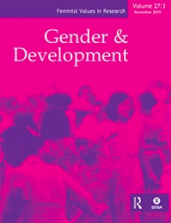Women’s voluntary work in the community: a question of recognition and rewards

Overview
In South Korea, the state has played a minimal role in social provisioning, and as such, care provisions have been dependent on women's unpaid labour. Women's unpaid labour, especially in terms of voluntary activities, has played an important role in the sustenance of the community. However, women's voluntary work is often devalued as a free and readily available resource in public policy. Over the last few decades, a series of innovative policies on building community and promoting social economy have been implemented in South Korea to address problems of low economic growth, an ageing population, and polarisation of the society owing to neoliberal restructuring. While Korean women played pivotal roles in these innovative community-building projects, the sociopolitical connotations of their voluntary work, including appropriate public recognition and rewards, have rarely been discussed. This paper examines Korean women's role in the government-funded neighbourhood community-building project (Maeulmandeulgi) in South Korea. Reviewing public documents and survey data, this paper identifies existing gaps between policy discourses and practices, and examines their causes and fallouts, including rising discontent among community activists over these gaps. The paper also discusses the sociopolitical meaning of women's voluntary work for community building and the kind of changes that would be necessary to recognise and reward suitably women's voluntary work in the community.
Additional details
Author(s)
Publisher(s)
Editor(s)
DOI
10.1080/13552074.2022.2071969How to cite this resource
Citation styles vary so we recommend you check what is appropriate for your context. You may choose to cite Oxfam resources as follows:
Author(s)/Editor(s). (Year of publication). Title and sub-title. Place of publication: name of publisher. DOI (where available). URL
Our FAQs page has some examples of this approach.



